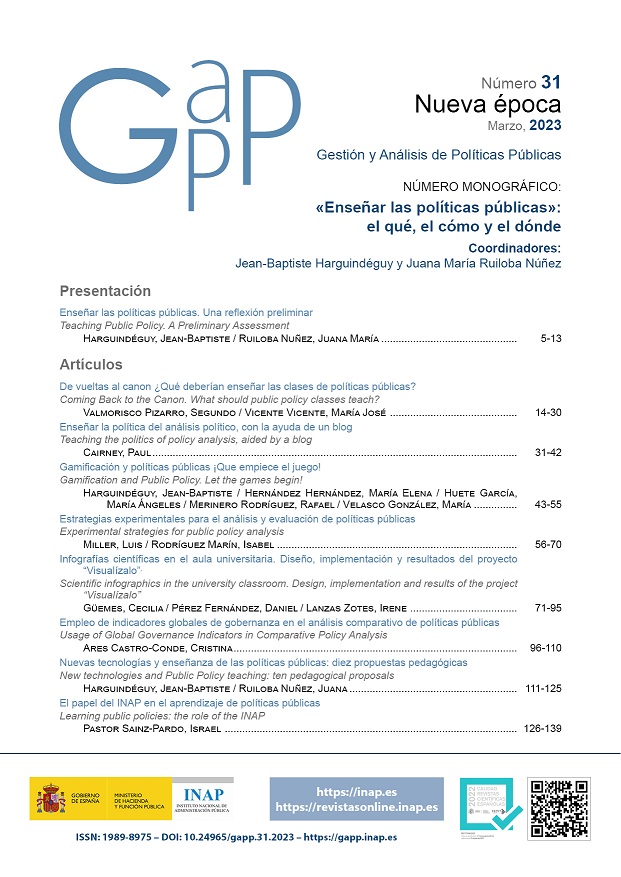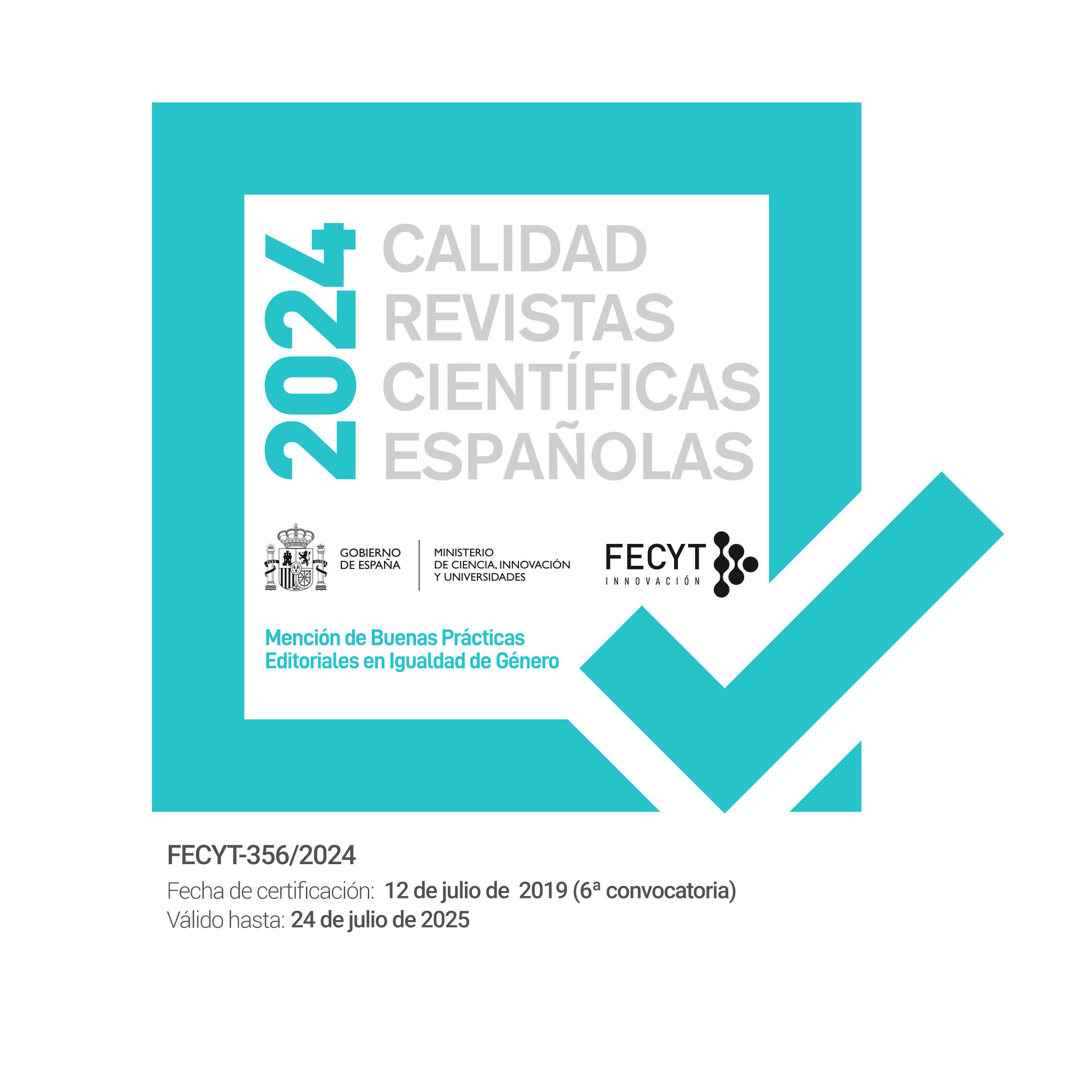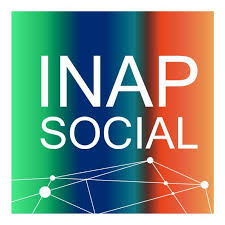Gamificación y políticas públicas ¡Que empiece el juego!
DOI:
https://doi.org/10.24965/gapp.11135Palabras clave:
Gamificación, juegos serios, políticas públicas, innovación docente, métodos de enseñanza, aprendizaje basado en juegosResumen
A pesar del éxito creciente de la gamificación en la universidad, resulta sorprendente que todavía no existan estudios sobre esta innovación docente en el campo de las políticas públicas. Este artículo pretende colmar este vacío. Después de recordar los fundamentos del concepto de gamificación, sus beneficios y sus limitaciones, este artículo pone de relieve una serie de actividades desarrolladas previamente: el uso de ladrillos Lego, un concurso de Kahoot, un rally urbano, un juego de supervivencia con huertos, un juego de escape, una competición de SimCity y una simulación basada en Diplomacy. Este artículo debe ser considerado como una hoja de ruta que debe ser adaptada al contexto de cada docente. Se aboga por un uso moderado y razonado de la gamificación. Esta corriente debe ser considerada por lo que es: una simple herramienta al servicio del aprendizaje, y no como un fin en sí misma.
Descargas
Citas
Bogost, I. (2014). Why gamification is bullshit. En S. Walz y S. Deterding (eds.), The Gameful World: Approaches, Issues, Applications (pp. 65-79). The MIT Press.
Breuer, J. y Bente, G. (2010). Why so serious? On the relation of serious games and learning. Journal for Computer Game Culture, 4(1), 7-24. https://doi.org/10.7557/23.6111
Caballero, P., Miranda, M. J. y Soto, A. R. (2022). La magia de enseñar y la aventura de aprender. Tándem, (77), sección Monografía: Gamificación en Educación Física, 47-54. https://www.grao.com/es/producto/la-magia-de-ensenar-y-la-aventura-de-aprender-ta077152896
Caillois, R. (1958). Teoría de los juegos. Seix Barral.
Ciuchita, R., Heller, J., Köcher, Sarah, Köcher, Sören, Leclercq, T., Sidaoui, K. y Stead, S. (2022). It is really not a game: An integrative review of gamification for service research. Journal of Service Research, 26(1), 3-20. https://doi.org/10.1177/10946705221076272
Colville-Andersen, M. (2017). The Life-sized City [TV series]. TVOntario. Disponible en: https://www.imdb.com/title/tt7464102/
D’Afflon, A. (2012). Sur l’échelle de la ludicité. Création et gamification. Hermès, La Revue, 62(1), 41-47. https://doi.org/10.4267/2042/48275
Deterding, S. (2012). Gamification: Designing for motivation. Interactions, 19(4), 14-17. https://doi.org/10.1145/2212877.2212883
Diamond, J. (2007). Colapso: por qué unas sociedades perduran y otras desaparecen. DeBolsillo.
Donovan, T. (2017). It’s all a game: The history of board games from Monopoly to Settlers of Catan. Thomas Dunne Books.
Duke, R. D. (2011). Origin and evolution of policy simulation: A personal journey. Simulation & Gaming, 42(3), 342-358. https://doi.org/10.1177/1046878110367570
Ferreiro Prado, L. (ed.) (2020). Metodologías Activas en las Aulas de Ciencia Política y Relaciones Internacionales. Tirant lo Blanch.
Fuchs, K. (2022). Bringing Kahoot! Into the classroom: The perceived usefulness and perceived engagement of gamified learning in higher education. International Journal of Information and Education Technology, 12(7), 625-630. https://doi.org/10.18178/ijiet.2022.12.7.1662
Gee, J. P. (2003). What video games have to teach us about learning and literacy. Palgrave Macmillan.
Geurts, J. L., Duke, R. y Vermeulen, P. (2007). Policy gaming for strategy and change. Long Range Planning, 40(6), 535-558. https://doi.org/10.1016/j.lrp.2007.07.004
Granic, I., Lobel, A. y Engels, R. C. (2014). The benefits of playing video games. American Psychologist, 69(1), 66-78. https://doi.org/10.1037/a0034857
Hardin, G. (1968). The tragedy of the commons. Science, 162(3859), 1243-1248. https://www.jstor.org/stable/1724745
Hassan, L. y Hamari, J. (2020). Gameful civic engagement: A review of the literature on gamification of e-participation. Government Information Quarterly, 37(3), 1-21. https://doi.org/10.1016/j.giq.2020.101461
James, A. R. (2013). Lego Serious Play: A three-dimensional approach to learning development. Journal of Learning Development in Higher Education, (6), 1-18. https://doi.org/10.47408/jldhe.v0i6.208
Jordán, J. (2018, 9 de abril). Aprendiendo estrategia en entornos competitivos: el juego Diplomacy como herramienta didáctica. Global Strategy. https://global-strategy.org/juego-diplomacy-aprendiendo-estrategia/
Kapp, K. M. (2012). The Gamification of Learning and Instruction: Game-based Methods and Strategies for Training and Education. Pfeiffer.
Kirk, T. y Harris, C. (2011). It’s all fun and games in the library. Knowledge Quest, 40(1), 8-9. https://www.proquest.com/scholarly-journals/all-fun-games-library/docview/912513155/se-2?accountid=14695
Koivisto, J. y Hamari, J. (2019). The rise of motivational information systems: A review of gamification research. International Journal of Information Management, (45), 191-210. https://doi.org/10.1016/j.ijinfomgt.2018.10.013
Kolson, K. (1996). The politics of SimCity. PS: Political Science and Politics, 29(1), 43-46. https://doi.org/10.2307/420191
Landers, R. N., Auer, E. M., Collmus, A. B. y Armstrong, M. B. (2018). Gamification science, its history and future: Definitions and a research agenda. Simulation & Gaming, 49(3), 315-337. https://doi.org/10.1177/1046878118774385
Le Lay, S., Savignac, E., Frances, J. y Lénel, P. (2021). Le capitalisme gamifié. En S. Le Lay, E. Savignac, J. Frances y P. Lénel (dirs.), La gamification de la société: vers un régime du jeu? (pp. 2-6). ISTE Editions.
Lee, M. y Shirkey, Z. (2017). Going beyond the existing consensus: The use of games in international relations education. PS: Political Science & Politics, 50(2), 571-575. https://doi.org/10.1017/S1049096516003218
León Díaz, Ó., Martínez Muñoz, L. F. y Santos Pastor, M. L. (2019). Gamificación en educación física: un análisis sistemático de fuentes documentales. Revista Iberoamericana de Ciencias de la Actividad Física y el Deporte, 8(1), 110-124. https://doi.org/10.24310/riccafd.2019.v8i1.5791
Loggins, J. A. (2009). Simulating the foreign policy decision-making process in the undergraduate classroom. Political Science and Politics, 42(2), 401-407. https://doi.org/10.1017/S1049096509090544
Mayer, I. S. (2009). The gaming of policy and the politics of gaming: A review. Simulation & Gaming, 40(6), 825-862. https://doi.org/10.1177/1046878109346456
McCusker, S. (2014). Lego Serious Play: Thinking about teaching and learning. International Journal of Knowledge, Innovation and Entrepreneurship, 2(2), 27-37. http://www.journal.ijkie.org/IJKIE_August2014_SEAN%20MCCUSKERv3.pdf
Morschheuser, B., Hamari, J., Koivisto, J. y Maedche, A. (2017). Gamified crowdsourcing: Conceptualization, literature review, and future agenda. International Journal of Human-Computer Studies, (106), 26-43. https://doi.org/10.1016/j.ijhcs.2017.04.005
Navarro Mateos, C., Pérez López, I. J. y Femia Marzo, P. (2021). La gamificación en el ámbito educativo español: revisión sistemática. Retos: Nuevas Tendencias en Educación Física, Deportes y Recreación, (42), 507-516. https://doi.org/10.47197/retos.v42i0.87384
Ostrom, E. (1990). Governing the Commons. Cambridge University Press.
Parra Boyero, M., Caballero Blanco, P. y Domínguez Carrillo, G. (2010). La conquista del imperio romano. Tándem, (34), sección Monografía: El juego de rol como herramienta educativa, 47-63. https://www.grao.com/es/producto/la-conquista-del-imperio-romano
Pérez Gallardo, E. y Gértrudix-Barrio, F. (2021). Ventajas de la gamificación en el ámbito de la educación formal en España. Una revisión bibliográfica en el periodo de 2015-2020. Contextos Educativos, Revista de Educación, (28) (Monográfico: Atención a la alta capacidad matemática (ACM): estrategias de intervención y uso de recursos digitales), 203-227. http://doi.org/10.18172/con.4741
Pérez-López, I. J. y Navarro Mateos, C. (2022). Gamificación: lo que es no es siempre lo que ves. Sinéctica, Revista Electrónica de Educación, (59), artículo e1414. https://doi.org/10.31391/S2007-7033(2022)0059-002
Pérez López, I. J., Rivera García, E. y Trigueros Cervantes, C. (2017). La profecía de los elegidos: Un ejemplo de gamificación aplicado a la docencia universitaria. Revista Internacional de Medicina y Ciencias de la Actividad Física y del Deporte, (66), 243-260. https://doi.org/10.15366/rimcafd2017.66.003
Reynolds, K. (Director & Producer) (1994). Rapa Nui. Warner Bros.
Romero, B. (2022). Train. http://brenda.games/train
Sailer, M. y Homner, L. (2020). The gamification of learning: A meta-analysis. Educational Psychology Review, (32), 77-112. https://doi.org/10.1007/s10648-019-09498-w
Saracoglu, G. y Kocabatmaz, H. (2019). A study on Kahoot and Socrative in line with preservice teachers’ views. Educational Policy Analysis and Strategic Research, 14(4), 31-46. https://doi.org/10.29329/epasr.2019.220.2
Sicilia Camacho, A. y Delgado Noguera, M. A. (2002). Educación física y estilos de enseñanza. INDE Publicaciones.
Siemon, D. y Eckardt, L. (2017). Gamification of teaching in higher education. En S. Stieglitz, C. Lattemann, S. Robra-Bissantz, R. Zarnekow y T. Brockmann (eds.), Gamification (pp. 153-164). Springer. https://doi.org/10.1007/978-3-319-45557-0_11
Silva, H. (2013). La gamification de la vie: sous couleur de jouer? Sciences du Jeu, (1). https://doi.org/10.4000/sdj.261
Tanuro, D. (2007, diciembre). L’inquiétante pensée du mentor écologiste de M. Sarkozy. Le Monde Diplomatique, 22-23. https://www.monde-diplomatique.fr/2007/12/TANURO/15400
Taraldsen, L. H., Haara, F. O., Lysne, M. S., Reitan Jensen, P. y Jenssen, E. S. (2022). A review on use of escape rooms in education – touching the void. Education Inquiry, 13(2), 169-184. https://doi.org/10.1080/20004508.2020.1860284
Torres-Toukoumidis, A., Romero-Rodriguez, L., Aguaded, I., Pérez Rodríguez, A. y Sandoval, Y. (2017). Procedural model in the evaluation of public policy through gamification. Revista de Administração Publica, 51(5), 810-827. http://dx.doi.org/10.1590/0034-7612170058
Velasco González, M. (2016). La ciudad como recurso docente. Aprendizaje en el lugar (place based learning) y aprendizaje experiencial (experiencial learning) [Proyecto de Innovación y Mejora de la Calidad Docente, n.º de proyecto: 323]. Universidad Complutense de Madrid. https://eprints.ucm.es/id/eprint/35437/
Veldkamp, A., van de Grint, L., Knippels, M. C. y van Joolingen,W. R. (2020). Escape education: A systematic review on escape rooms in education. Educational Research Review, (31). https://doi.org/10.1016/j.edurev.2020.100364
Vesa, M., Hamari, J., Harviainen, J. T. y Warmelink, H. (2017). Computer games and organization studies. Organization Studies, 38(2), 273-284. https://doi.org/10.1177/0170840616663242
Wang, A. I. y Tahir, R. (2020). The effect of using Kahoot! For learning – A literature review. Computers & Education, (149). https://doi.org/10.1016/j.compedu.2020.103818
Woessner, M. (2015). Teaching with SimCity: Using sophisticated gaming simulations to teach concepts in introductory American government. PS: Political Science & Politics, 48(2), 358-363. https://doi.org/10.1017/S104909651400211X
Woods, S. (2012). Eurogames: The Design, Culture and Play of Modern European Board Games. McFarland and Company.
Descargas
Publicado
Cómo citar
Número
Sección
Licencia
Derechos de autor 2022 Gestión y Análisis de Políticas Públicas

Esta obra está bajo una licencia internacional Creative Commons Atribución-NoComercial 4.0.












